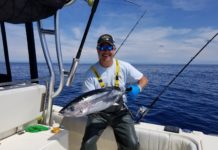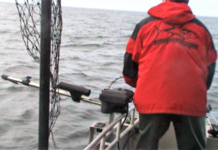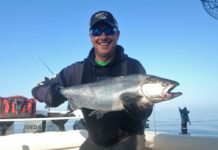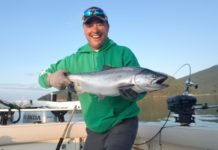
In 2012, scientists investigating deepwater canyons off the coasts of Virginia and Maryland discovered, for the first time, Lophelia colonies in the area. This discovery filled a gap in scientists’ knowledge of the distribution of this important coral species. Image courtesy of Deepwater Canyons 2012 Expedition, NOAA-OER/BOEM.
Did You Know?
Investigating cold-water coral communities now allows us to learn about them before they are extensively damaged by human activities. Collected information will create a base line to evaluate future impacts and will to help in making decisions about how to protect these unique, important ecosystems.
When most people think about corals, they usually imagine a sunny tropical reef speckled with fishes, crabs, snails, and other creatures on a colorful rocky outcrop. However, not all corals are found on island coasts in shallow seas. In fact, over half of all known coral species are found in deep, dark waters where temperatures range from 4-12° C. For this reason, we call these corals the “cold-water” or “deep-sea” corals. They are found all over the world.
Cold-water corals are part of the taxonomic group called Cnidaria, and they are related to animals like sea anemones and jellyfish. They can live as individuals or as colonies that form extensive reefs. These corals feed by waiting for small food particles to flow past, and then use their stinging cells to capture them. They also provide habitat for other species. These beautiful animals are among the oldest living organisms; some reefs are several thousand years old, and some individual corals live several hundred years.
While we have known about cold-water corals for hundreds of years, aside from a few areas, they have been poorly studied. Usually existing in a world of darkness, these corals lack the symbiotic algae that populate (and help color) the shallow corals. However, increasing knowledge and evidence shows that cold-water corals are important as fish habitat, hold records on ocean climate and productivity, and are hotspots of biodiversity, including new species.
For More Information:
Cold-water Corals in the Gulf of Mexico, Lophelia II 2012: Deepwater Platform Corals
Deep-sea Corals and How to Measure Their Age and Growth, Davidson Seamount: Exploring Ancient Coral Gardens
The World of Deep-Sea Corals, Life on the Edge 2005: Exploring Deep Coral Communities
Lesson Plans for Lophelia II 2010: Oil Seeps and Deep Reefs Expedition
Sign up for the Ocean Explorer E-mail Update List.















